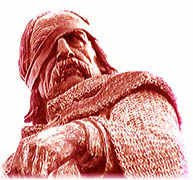Marx defined the classes in terms of their relationship to the mode of production. The haute bourgeoisie own and control it, the petit bourgeoisie we can identify with the middle classes - they may own a small business or assist on the running of a larger one. The proletariat are those whose worth is seen as their labour in exchange for wages. The very bottom rung are the lumpenproletariat, those who have nothing and offer nothing to society - beggars, thieves and the like.
I don't think these classes themselves have changed, rather the environments have shifted and indeed the modes of production have become more diverse, which can make them more difficult to spot. Really the petit bourgeoise has expanded, and increased perceived mobility within that group seems to create new classes but their relationship to the mode of production does not change.
In the United Kingdom, finance has become the primary mode of production. The new bourgoisie have been the bankers and financiers. The proletariat their "customers".
This is an intrinsically short term model which seeks to extract capital for the benefit of the bourgoisie as close to the point of investment as possible.
The financial proletariat get no benefit from this model - in fact the poorer you are, the more you are exploited through penal interest rates, and riskier personal financial models.
Subscribe to:
Post Comments (Atom)

No comments:
Post a Comment